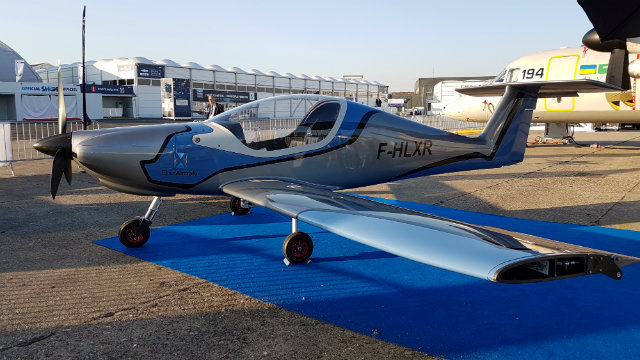French start-up Elixir Aircraft is preparing its two-seat Elixir piston-single for first flight at the end of August, and hopes to secure European certification for the all-carbonfibre type in the second quarter of 2018.
“The aircraft is 99% complete,” says Elixir co-founder and chief operations officer Cyril Champenois. “We just have to put the final touches to the electrical harness and then it will be ready to fly.”
Only one aircraft will be involved in the fight-test campaign, but the Elixir’s major composite parts, including the wing, aileron, flaps and horizontal tail, will undergo ground testing concurrently. “We are building this test article now, and it will be ready in September,” says Champenois.
The company, based in La Rochelle in western France, has secured nine orders for the €150,000 ($177,000) aircraft to date and plans to deliver the first units in the third quarter of 2018.
Elixir forecasts production of 12 aircraft in the first year, 20 in the second and 80 within five years.

Elixir Aircraft
“So far all of our position holders are based in France, and are evenly split between owner flyers and training schools,” says Champenois. Elixir is broadening its European sales effort and is now in discussions with potential customers in Germany, Italy and the UK.
The USA is also a key market, with US validation targeted for 2020. Champenois says: “Over 60% of the world’s two-seat aircraft fleet is based in this country, so we have to be there."
To help raise awareness of the Elixir, the company plans to display the aircraft at next July’s AirVenture show in Oshkosh, Wisconsin. “As the largest and best known GA show in the world, it’s an ideal venue for the Elixir to make its US debut,” he says.
The Rotax 912iS-powered aircraft is projected to have a cruise speed of 140-170kt (260-315km/h) depending on altitude, a range of 1,000nm (1,850km), fuel burn of 14 litres/h, an empty weight of 265kg (580lb) and a payload of 280kg. The Elixir also features an emergency parachute system manufactured by BRS, a bespoke Garmin G3X cockpit, and a fuel-tank inerting system.
Source: Flight International


























